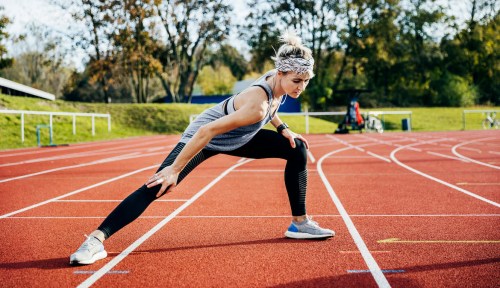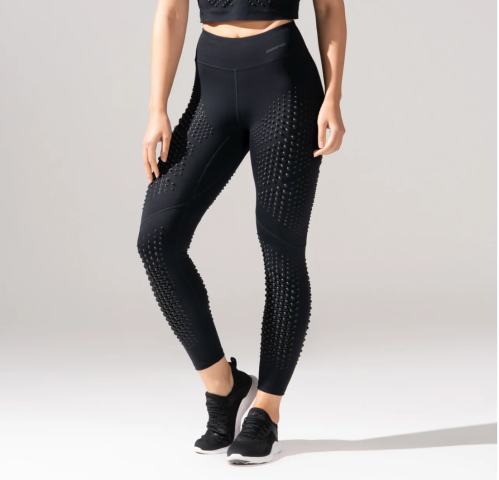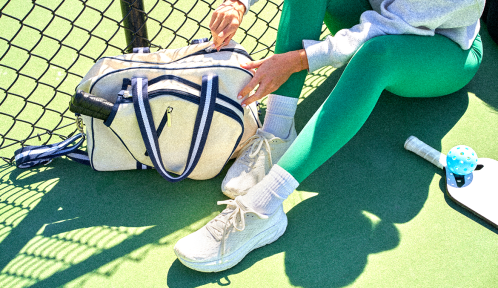Our editors independently select these products. Making a purchase through our links may earn Well+Good a commission
I love to run. Whether I hit the pavement, treadmill, or trail, I feel strong and powerful. But once I started running every day for months, I began looking for ways to spice up my runs. At first, I tested different types of running, and that was fun—for a while. I wanted even more of a challenge, and got curious about weighted leggings.
Experts in This Article
running coach and founder of Running With Life
It might sound a little nutty, but honestly, my idea wasn’t so far out there. In fact, professional athletes and leisure runners have hailed running and training in weighted vests. “There has been some research on weighted garments, like a weighted backpack or a weighted vest,” says Amie Dworecki, CEO and head coach of Running with Life. “They have been positive as far as adding some strength, adding some speed.”
However, not much research has been conducted on weighted leggings specifically. “The research that has been out has been mixed,” says Dworecki. “There’s been no change and also some positive results.” For that reason, she suggested, “you might want to try it and see if it helps you to gain some speed or strength.”
If you’ll indulge me, we’ll use my experience as a case study with a sample size of one: me. I tried out weighted leggings for three weeks to see what impact, if any, that would have on my running.
Omorpho G-Tight — $149.00
These weighted leggings are designed with a soft, stretchy, and cooling fabric (made of nylon and spandex).
Weight: 1 pound, strategically spread across the legsAvailable colors: BlackSizes: XS to XLCare needs: Machine-washable and dryer-friendly
Pros:
- They provide a snug fit
- There’s a lot of support
- They don’t fall down
- They ultimately made me faster
Cons:
- They initially slowed me down
- They only have one pocket
- They leave marks on my thighs
- They’re pretty pricey
First impressions

For starters, the packaging on Omorpho products is A1. I was thoroughly impressed with how chic the cardboard box and paper wrapping were.
When I took out the weighted leggings, I remember thinking they might be too tight. I’d ordered a small, even though I usually wear a medium, since the site recommends sizing down if you’re in between sizes. At first, I wondered if I had made a mistake. Once I put them on though, I realized the fit was a bit snug, but in a good way. I could tell that was meant to offer support by way of slight compression. What’s more, the leggings didn’t fall down even though they have weight on them.
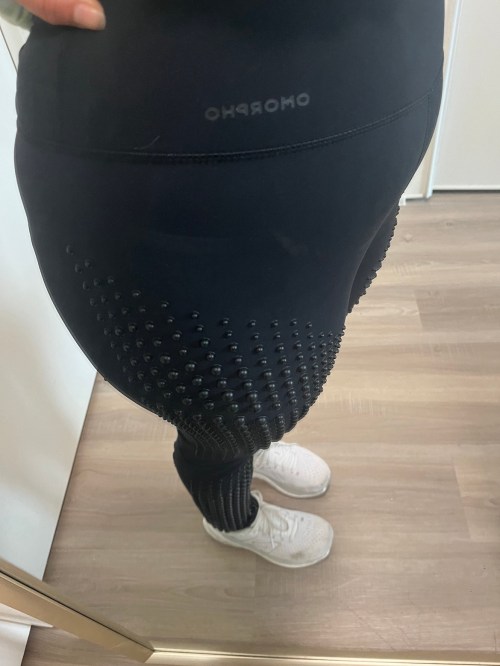
Since these leggings only weigh about a pound, they’re considered a “microload.” Omorpho says you can use them for dance classes, yoga, and plyometric exercises just as you can for running. The weight is spread throughout your legs via tiny beads on the fabric. When I slipped into the leggings, I realized none of them were on my joints—which is apparently very intentional.
“Let’s say you put the weight on your ankle. That’s really loading a joint and can actually cause problems because you’re swinging that joint [with weight directly on it],” says Dworecki. “These leggings, however, are going to more evenly distribute the weight over an entire body part.” (Score!)
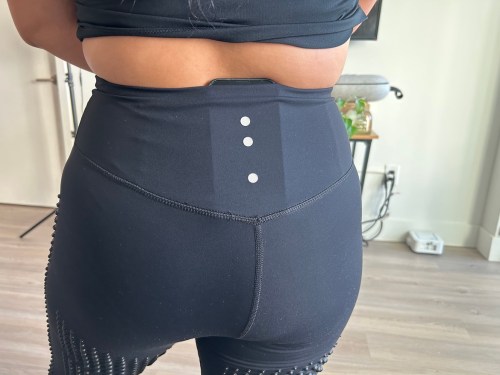
One notable downside: There’s only one pocket. I don’t own an Apple Watch or other sports watch, so I rely on my phone—which I tend to put in my leggings pockets—for all my fitness metrics. I also usually take my keys with me, and I’ll place those in a different pocket. I can’t do that with the Omorpho leggings.
Once I took these off, I also realized that because the weight is distributed as small half-domes all over your leg, they temporarily leave some marks when you’ve worn them for more than 10 minutes.
How running in weighted leggings affected my mile pace
Any runner knows that running isn’t just physical—it’s also extremely mental. I found that I experienced differences on both of those levels when I logged my miles in these weighted leggings.
Initially, I found that the Omorpho G-Tight slowed me down a bit. Where I could typically run a mile in nine minutes, I found my mile pace going up to nine-and-a-half minutes the first time that I wore these leggings.
After a few weeks however, adding the extra challenge paid off. I would run with the weighted leggings three to four times a week and then run faster in my regular leggings. I was eventually able to reduce my typical mile pace from nine minutes to eight and a half minutes. That’s a significant jump in improvement.
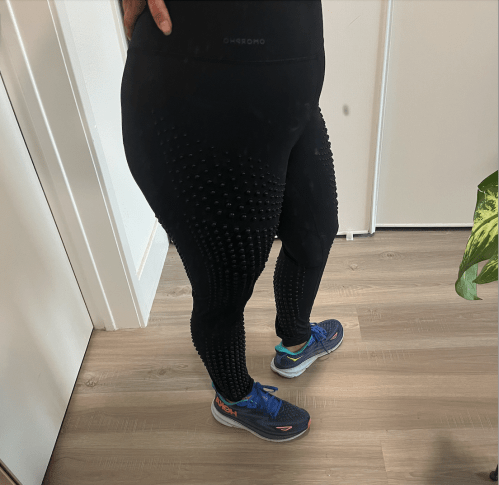
The mental side, though, was a bit trickier. I wouldn’t go as far as to claim that running in these leggings is difficult, because it’s really not that much weight. However, I am quite an anxious person and I tend to doubt myself a lot. How in the world am I going to run a mile with heavier leggings?, I would wonder. That self-doubt permeated my earlier runs, which slowed down my mile pace to close to 10 minutes.
Once I ran in the Omorpho G-Tight a few times, though, it dawned on me that not only could I do this, I already had. And that made me feel like a better runner. I could run confidently even when I was wearing something meant to make each step extra challenging.
Who should (and shouldn’t) run in weighted leggings
Sure, I’ve personally found that running in these leggings has made me faster. But that doesn’t mean they’re right for everyone.
“More experienced runners are the ones who should try weighted leggings,” Dworecki says. “If you’re brand-new to running, I probably wouldn’t recommend weighted anything, because you really want the running to be routine and comfortable.”
Additionally, she says, if you already know that you have joint or heart issues, you’ll also want to steer clear from these leggings. Keep things simple—running itself is already difficult enough.
But if you are tempted to take these for a spin, just be sure to check in with your body post–weighted legging use. “Really tune into how you’re feeling with these,” Dworecki says. “Just like when you make any other change in a routine, if you feel like it’s too much, or you’re feeling too sore, take a couple days off to do a regular run without them, and then go back to wearing them.”
Sign up for the Well+Good SHOP Newsletter
Get exclusive deals on wellness, beauty, fitness, and food products that have been hand-picked by our editors.
Got it, you've been added to our email list.
